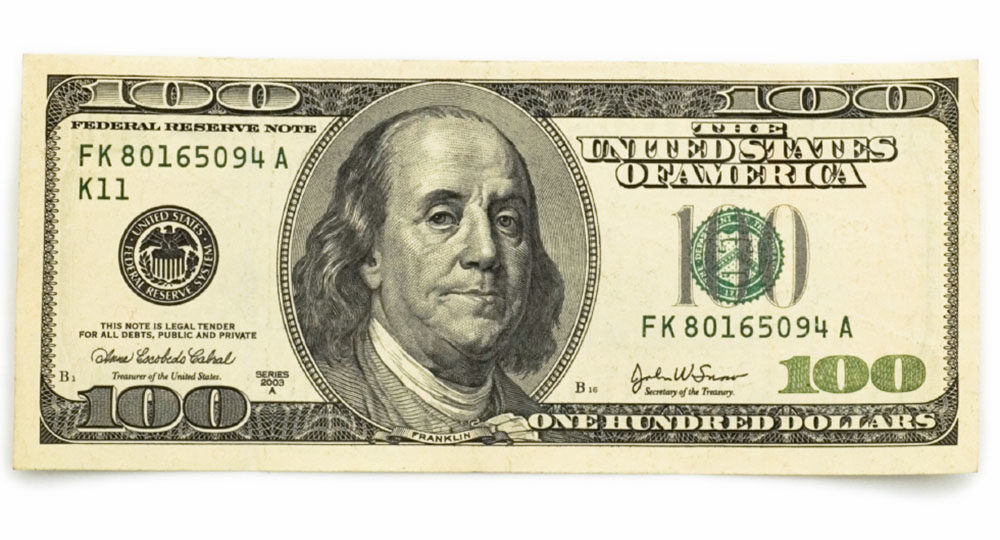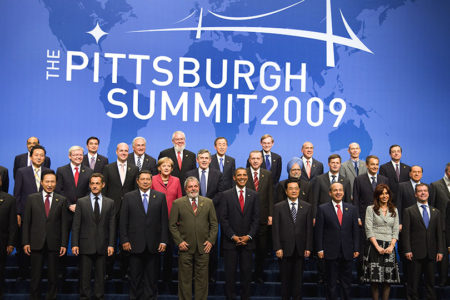The Decline of the U.S. Greenback
How much is $1 trillion? To get an idea of how massive this amount is, think of it in seconds. Going back in time 1 million seconds would take you back 12 days. One billion seconds would take you back 30 years, and 1 trillion seconds would take you back 32,000 years.1
The U.S. national debt exceeded $12 trillion at the end of 2009 and is projected to top $20 trillion in 10 years. This staggering national debt is causing investors to question the wisdom of investing in the U.S. dollar and is generating talk by other countries that perhaps the time is near to replace the greenback as the currency of choice for international transactions. Doing so would signal America’s decline and be a harbinger of end-times things to come.
Since World War II, the U.S. dollar has been the preferred currency for investment because it has been viewed as the securest in the world. This factor has made the United States the world financial leader for the past 60 years. Oil, for example, is valued and traded in dollars.
However, the credit and financial market collapse in 2008 caused many foreign investors to question the value of investing in greenbacks. Their concern was heightened by the large U.S. deficits. The annual U.S. deficit, which has never reached $500 billion, was projected to be $1.5 trillion in 2009 and more than $9 trillion over the next 10 years.2
In August 2009 the Wall Street Journal reported that doubts about the dollar were growing as the budget deficit grew. The Journal quoted Claire Dissaux, managing director of global economics and strategy for Millennium Global Investments Ltd, as saying, “There has been a lot of disappointment with the way the U.S. credit crisis was handled. The dollar’s loss of influence is a steady and long-term trend.”3 There is concern the government’s fiscal and monetary stimulus programs could end up fueling inflation in the days to come and thereby devalue the dollar.
In October the United Nations called for a new, global reserve currency to end the dollar’s supremacy that has allowed America the “privilege” of building a huge trade deficit. The same month, Iran announced it had replaced the U.S. dollar with the euro as the main foreign currency in its reserves. Although political differences between Iran and the United States influenced the decision, Iran’s deputy central bank chief said the switch was due to the weakened U.S. dollar.4
The Independent reported in early October that the Gulf Arab states were secretly negotiating with China, Russia, Japan, and France to replace the greenback with a basket of currencies for trading oil. But the Gulf Arab states denied such talks were being held.
In the fall of 2009 the U.S. dollar exchange rate to foreign currencies declined, while the price of gold rose to an all-time high of more than $1,000 an ounce, further weakening the dollar’s future as the world’s top currency. Gold is viewed as a safe-haven investment, as the world’s continued economic slump breeds fear.
All of this activity points to the reality that the United States is losing its position as the world financial leader, and the dollar’s decline is a leading indicator of what may lie ahead. Experts predict the dollar is safe for the next 10 to 15 years. The biggest investor in U.S. dollars, China, has not yet begun to pull out of the dollar. However, America’s trillion-dollar deficits can’t continue without a day of reckoning.
Once the fruit of mismanaged national finance ripens, it will not be possible to reverse the consequences. The U.S. greenback is in decline, and there are fundamentally sound reasons why. For our sakes, may our government leaders wake up and mend their ways before it is too late. But God may have other reasons for the dollar’s decline—and with it, the decline of the United States as the world leader. Future prophecy does not reveal a clear role for America. We may be seeing the ordering of events that are setting the stage for what the Bible tells us is to come.
ENDNOTES
- Jack Uldrich, cited in “Dollar Signs,” World magazine 24, no. 16 (2009): 10.
- David M. Dickson, “White House: Budget deficit will top $1.5 trillion in ’09, ’10,” August 25, 2009 <washingtontimes.com/news/2009/aug/25/wh-budget-deficit-will-exceed-15-trillion-09-10>.
- Neil Shah, “As Budget Deficit Grows, So Do Doubts on Dollar,” The Wall Street Journal, August 26, 2009 <online.wsj.com/article/SB125122938682957967.html>.
- Massoud A. Derhally and Ladane Nasseri, “Euro Overtook Dollar in Iran Reserves, Official Says,” October 13, 2009 <bloomberg.com/apps/news?pid=20601110&sid=ah2EJU2rqEL0>.






